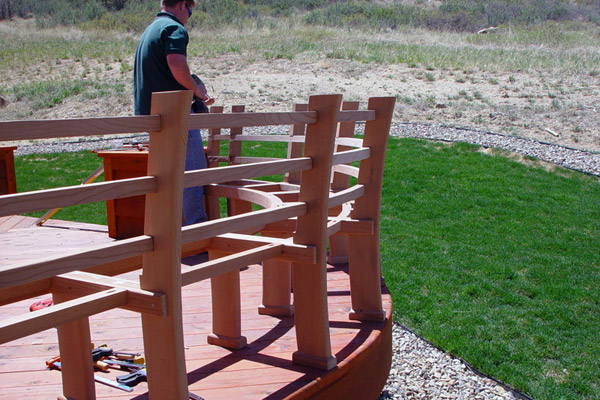
February 21, 2020 In Praise of Carpenters
At a time when fewer and fewer humans make anything of physical value, carpenters engage in a profoundly creative process.
By Fine Homebuilding Editors Issue 273 – March 2018
A carpenter’s intimacy with a building is particular and visceral. Carpenters know, for instance, how every material in a house smells when it is cut; what kind of dust it makes. They know how many pieces of each thing they can lift by themselves, how many with help, and the ratio of pieces moved today to tomorrow’s aches and pains. When they walk away, they know a building with their body in a way the occupants probably never will.
Carpenters wear layers, and rarely argue about whether to set the thermostat at 68°, 72°, or 76°. In fact, on those few halcyon days when temperatures stay in that neighborhood, it is cause for celebration. If eating your food on makeshift seating while exposed to the elements is a picnic, then the life of a carpenter is a picnic nearly every day.
Going to work as a carpenter may mean spending the day in a dank crawlspace, on a blazing rooftop, or in a Sheetrocked room with a million-dollar view. The material of the day may be heartbreakingly beautiful wood grain or back-breaking awkward OSB and foam panels, and is usually beyond the carpenter’s control; a result of decisions made elsewhere and earlier by clients, architects, managers. Those decisions can feel capricious.
The work of making buildings is full of hazard, discomfort, and disappointment, and lends itself to a certain natural grumpy cynicism. Carpenters know every way in which reality as verified in the field can make a joke of plan, schedule, and budget. Carpenters have seen, or at least heard of, every way a beam or a machine can slash, crush, disfigure, or destroy a body, and they work in the shadow of them all.
Making buildings is hard work, but is also full of magic, spontaneous improvisational genius, and transformation. Carpenters do their work in a world that isn’t square, level, or plumb when they get there, but is (mostly) when they leave. They are mechanics in the old, esteemed sense of the word.
Character is quickly evident in the way one walks across a cluttered deck, holds a tool and puts it down, and strikes a line. Carpenters must trust the person on the other end of a heavy load or the other end of the tape, and can therefore be quick to judge. They can also be patient, kind, and generous teachers. Everyone learns from someone else. Carpentry requires camaraderie.
At a time when fewer and fewer humans make anything of physical value, carpenters engage in a profoundly creative process, drawing on intellect, muscle, machinery, and materials to produce objects of lasting worth, to create shelter, to fulfill basic and quintessential human needs. The carpenter is in some ways midwife for the visions and dreams of others, bringing buildings into the world with all the attendant clamor, muck, and uncertainty of birth. It is hard work, and, done well, it is honorable, elegant, and inspiring, too.
Newell Isbell Shinn

